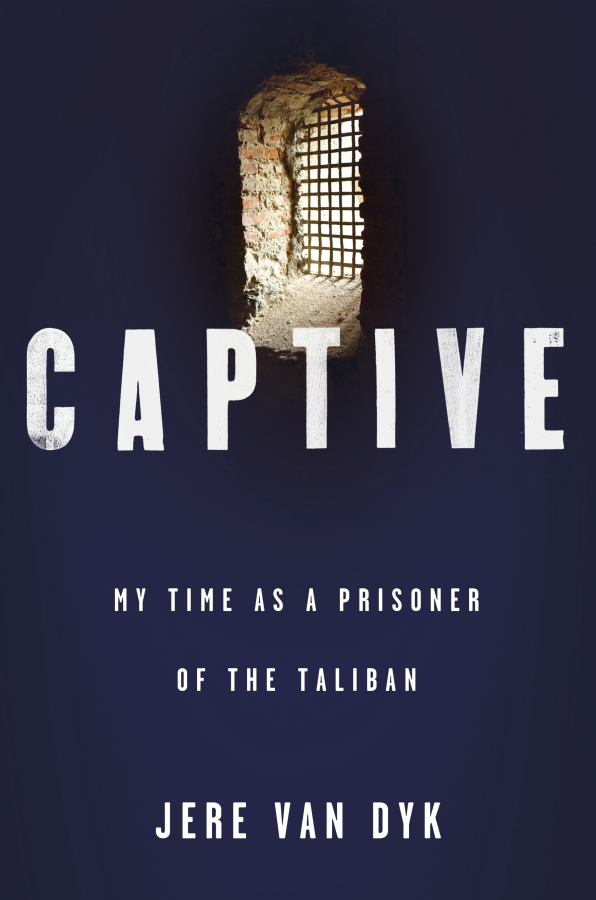Jere Van Dyk had a limited perspective on his 2008 kidnapping, when he spent 45 days as a Taliban hostage in Pakistan.
“I knew pretty much what was going on in the cell, but nothing really about what happened on the outside,” he said.
Van Dyk turned that experience into a book — “Captive” — but he knew there was more to the story. What the Vancouver native has learned since that 2010 memoir has resulted in another book. As the title indicates, it’s a wider look at what Van Dyk describes as “The Trade.”
“It is the story of my trip back to Afghanistan and Pakistan to find out who really kidnapped me and why,” Van Dyk said. “Through this, it becomes a story of the post-9/11 phenomenon of political kidnapping, beginning with Daniel Pearl,” a Wall Street Journal reporter who was murdered in 2002.
“The trade has become an illicit form of negotiation between the terrorists and the governments. It’s a form of warfare of the weak against the strong,” said the 1964 graduate of Hudson’s Bay High School.
Like suicide bombing, it gives a relatively small terrorist organization a way to fight a major military power.
It also marks the “invention of a new business that exists in lawless areas where states are weak or don’t exist,” he said. “The person — he or she — becomes a commodity.
“Al-Qaida today has a protocol for how it deals with kidnappings from Nigeria to Somalia. The amount of money is in the millions of dollars.
“It is economic, yet at the same time, politics play a larger role,” the author said. “Al-Qaida, the Taliban, ISIS — these groups don’t exist solely in a vacuum. There are governments involved.”
A lot of anger
In addition to his own experiences, Van Dyk tapped sources that span 35 years of global history for “The Trade.” They include Afghan fighters he lived with in 1981 during the Soviet invasion and family members of slain hostages he met in a 2015 White House conference.
“The government reached out to victims who survived and the families of those who didn’t,” he said. “There were about 60 of us.”
Topics included the American policy of not negotiating with terrorists.
At one point, “Doors were closed and there was no one there except us. It was an opportunity for families to say things when everybody was together, and they knew they were part of a group that understood, to the degree anyone can understand these things.
“There was so much anger at the government, at the world. We drew closer. No one minced words.”
And Van Dyk took notes. After he cleared everything with the families, Van Dyk used some of those White House notes in the opening of “The Trade.”
“There is a long chapter toward the end where I return to our time there and describe in detail what each family said to the government,” he said.
Another chapter recounts the meeting Van Dyk had with the parents of murdered journalist Daniel Pearl. He described it as a very moving meeting: “I still feel a sense of obligation, guilt at being alive.”
That conference also shifted Van Dyk’s writing focus. He was already working on a book about the militant Haqqani network.
With the mujahideen
Tribal leaders had arranged for Van Dyk to meet with the Haqqani. Some of them were fighters Van Dyk had lived with while covering the war as a freelance reporter in 1981.
(He wrote about that in a 1983 memoir, “In Afghanistan: An American Odyssey.”)
They remembered everything Van Dyk was part of, he said, such as trying to start a captured Russian tank. Now some of them were members of what Van Dyk called “the most vicious terrorist group in the world.”
“I became in 2015 the first and thus far only non-government Westerner to meet with them.”
When he learned at the White House conference that the Haqqani were holding hostages, “The Trade” moved to the front of his to-do list.
Meanwhile, Van Dyk still is working on his personal quest to learn more about who kidnapped him, and why.
While he said he’s getting closer, “I haven’t pinpointed it.”
As Van Dyk had noted, those terrorist groups have government sponsors.
“At the same time, they can’t control these people. I think I was kidnapped to be taught a lesson, and it got out of control,” he said. “Maybe they wanted to kill me, but people over them said no. I don’t know who was at the top.
“One thing the Haqqanis said to me was, we will tell you who your kidnappers are. They haven’t yet.”




